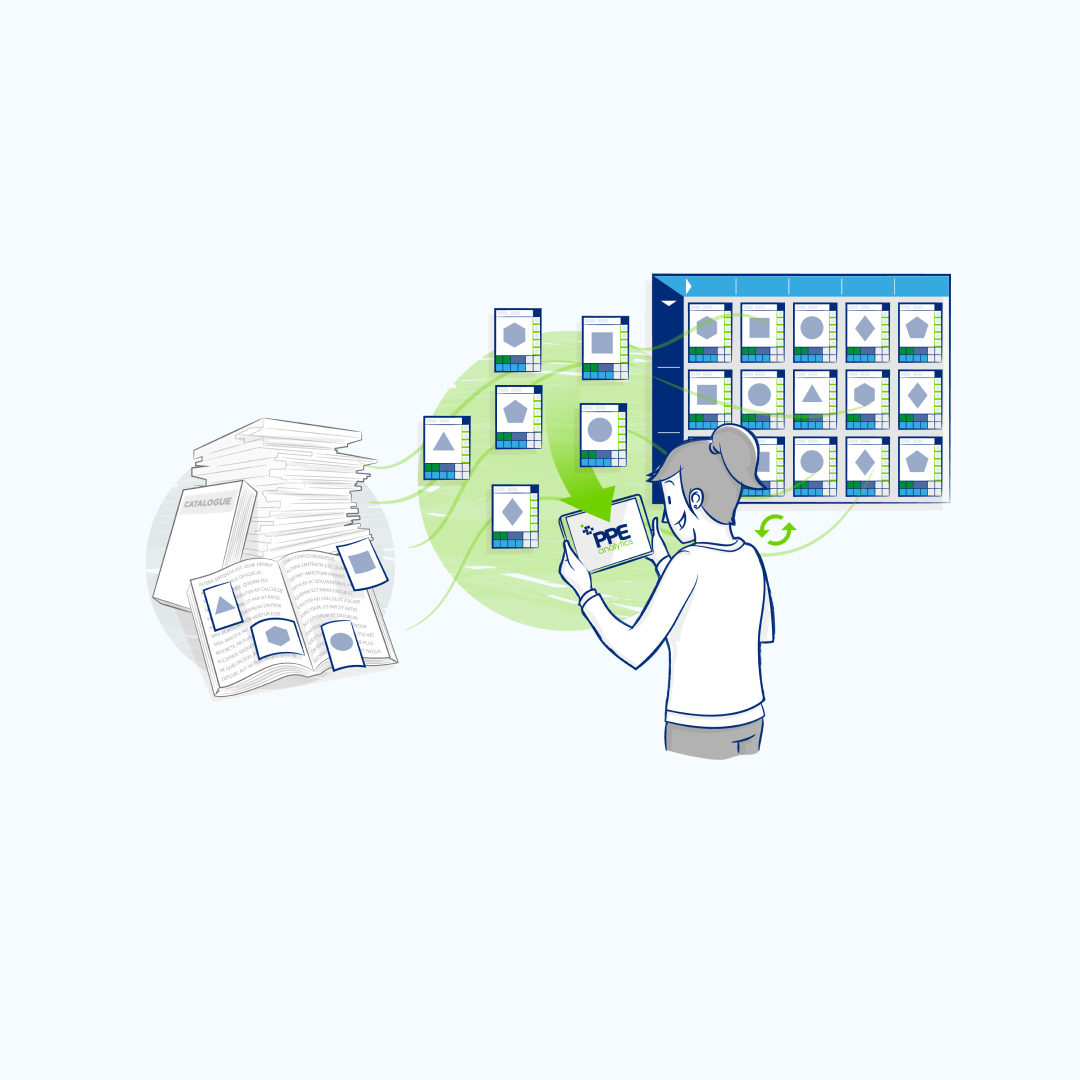Improving PPE analytics product adoption and brand image

Construction Helmets, a Ruthless Universe
The first time in a hardware store always leaves an indelible mark. You come to look for a pot of white paint and lift the veil on a world, an entire universe. The different shades of white. The material to cover. The drying time. The different methods of application. Resistance to humidity... A whole universe.
The universe of PPE analytics is that of Personal Protective Equipment (or PPE in English) and it's a sensitive topic: It is about the safety of women and men at their workplace. We're not just talking about a construction helmet or a pair of safety shoes. These are manufacturers who must comply with standards, legal frameworks. Who adapt different products to different professions and needs. Who innovate constantly. Not to mention distributors or end customers who must make a choice, make a decision.
In their early days, PPE analytics created a tool to compare all these products by scraping the web before moving towards an even bigger goal: creating a database of all the products on the market. Never seen before in this field.
They have thus acquired market expertise that is almost unique worldwide by offering a PIM tool dedicated to the PPE sector and a datapool service that compiles homogeneous PPE data on more than 55,000 unsized references. And they didn't stop there. By merging this data management tool with the market’s PPE product database, they quickly became indispensable to manufacturers, distributors and their customers: they facilitate data broadcasting and make it easier for a PPE to be seen and chosen.
A nail without a hammer, it doesn't go far
They quickly realized that a data hub without an API doesn't take you very far, and they embarked on this new technical project. While they are still thinking about the contours of their future API, one thing is clear: it will be used by humans, and it is important to document it as early as possible. Clear and complete documentation is as many technical questions avoided for support.
The Design First approach is chosen here: they experimented with documentation before coding the API. Five years of backlog on the subject, with all the data, is excellent material for asking the right questions about the API. Technically, the choice is made to use OpenAPI.
The first specification file was created and then uploaded to Bump.sh. After this first rendering, they needed a few weeks to iterate, adjust, and add descriptions where necessary. Visualizing clear and human-readable documentation in a matter of moments was crucial for the team: you quickly see what works or not in terms of understanding and approach.
Even before the API code was ready, the PPE analytics team shared its first documentation with future users. The approach allows observing the first friction points and correcting them very quickly, much more than if they had to touch production code.
Finally, another key advantage emerged from this Design-First approach: by preparing the documentation in advance, you quickly realize how to structure your data better.
Bump.sh in the toolbox
For PPE analytics, Bump.sh becomes their API wingman, offering them a smooth and comfortable experience. They appreciate the console's workflow and the CLI is essential to them: they quickly switch to continuous integration to gain speed.
Uploading their specification file and getting clear and readable documentation is an automated process, as the changes are instantly reflected when a developer pushes a new version. For them, quality, clear, and complete documentation is, above all, about being professional. Users and customers are reassured to see that a product is documented and well thought out. Even better: complete documentation sends a message about the obtained data quality.
Today, PPE analytics is a data dealer on PPE: they have unique expertise and a volume of data that cannot be compared. Their API and its documentation are strong arguments and contribute to their image among industry and distribution players. With customers such as Enedis, the manager of the public electricity network in France, they have quickly carved out an increasingly important place in a specific and very complex market.
They now aim to expand even further, with the ambition of becoming the indispensable tool for all manufacturers, distributors, and users of PPE.